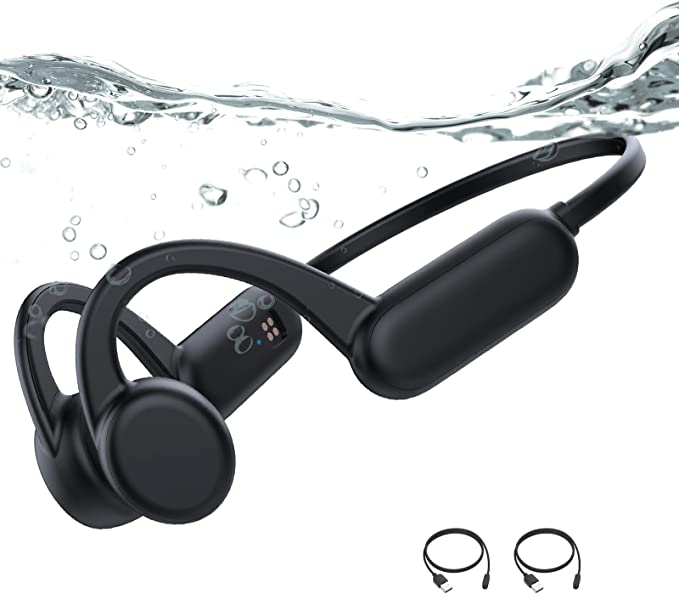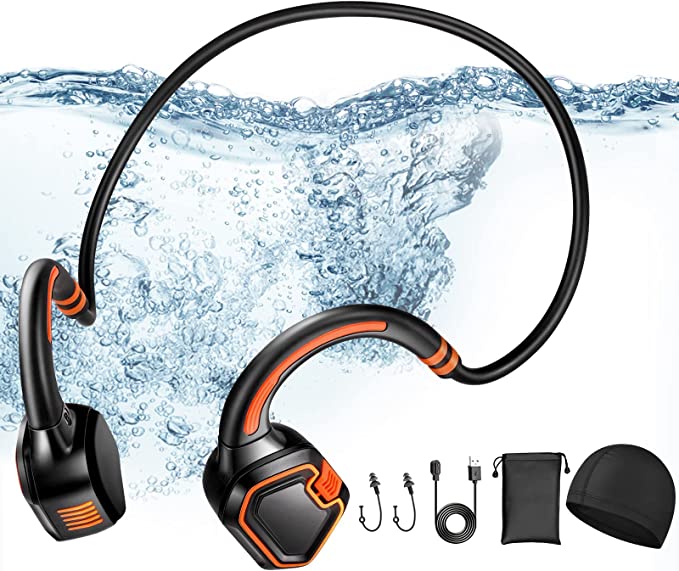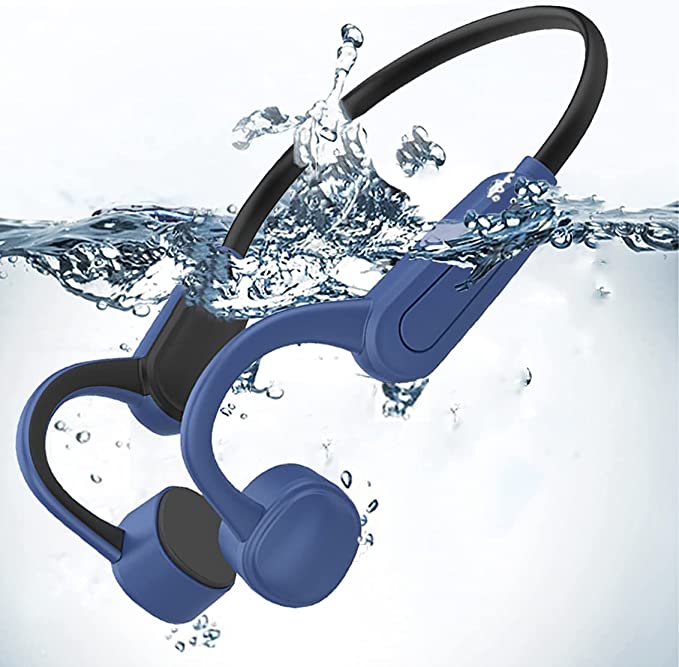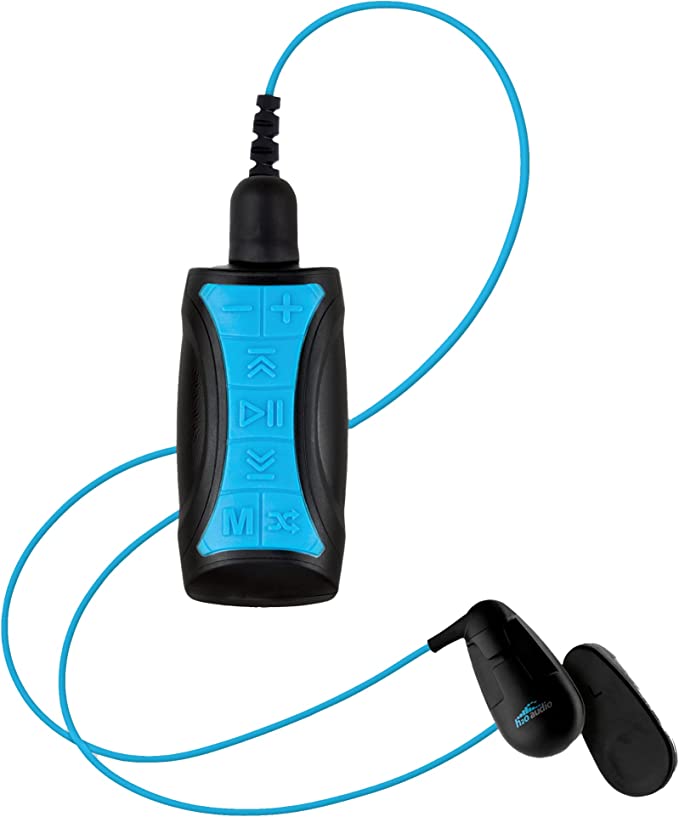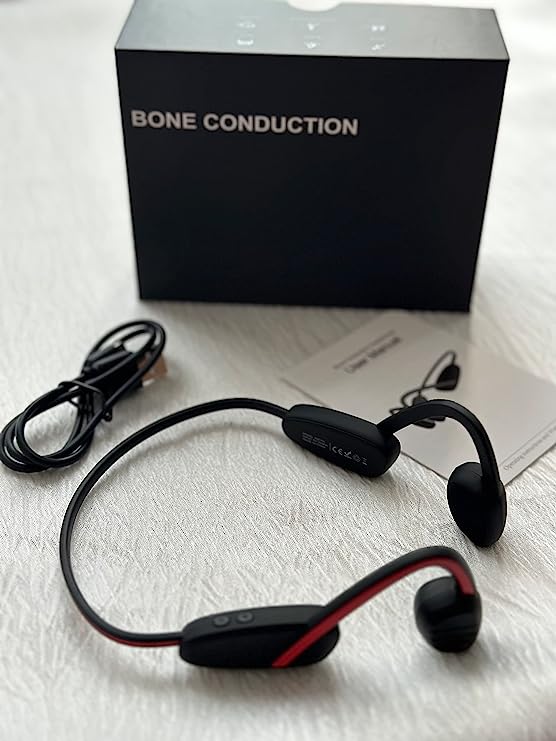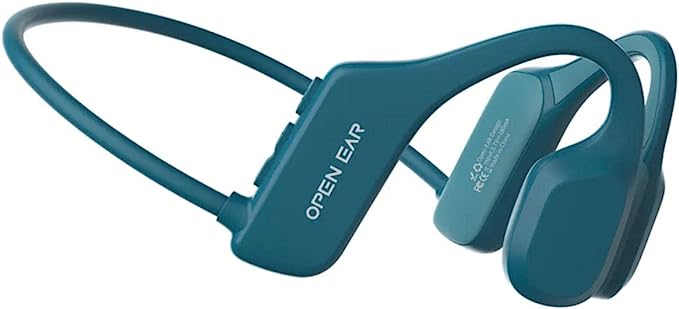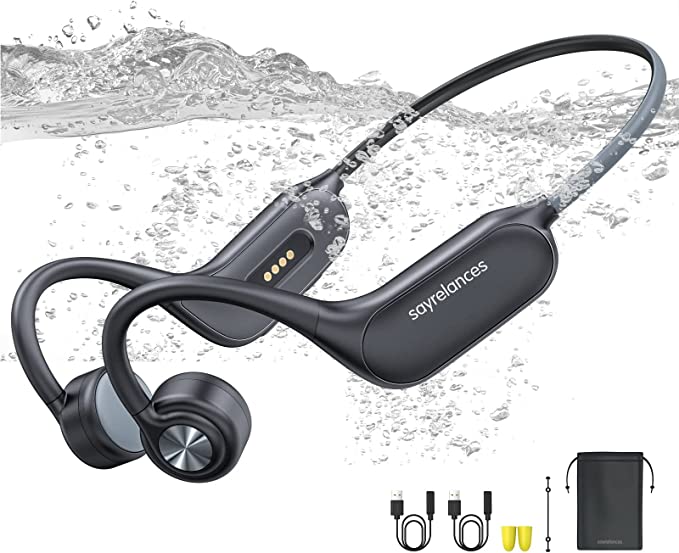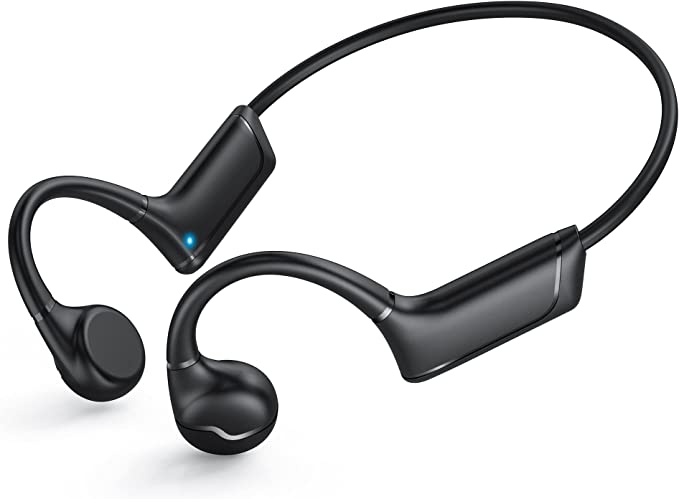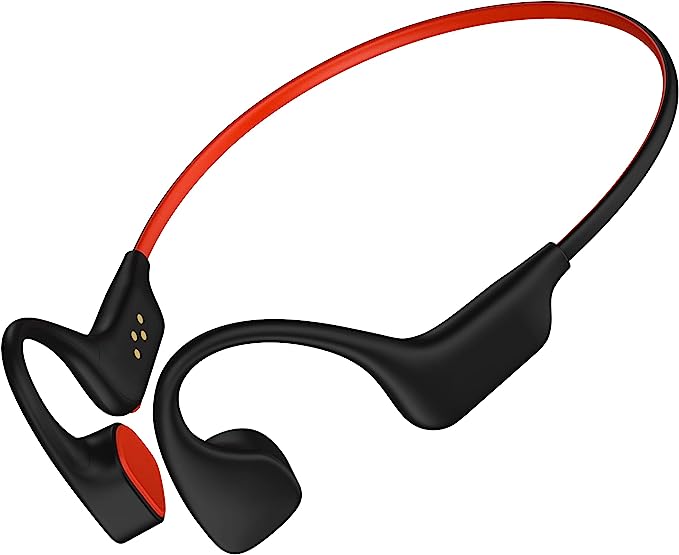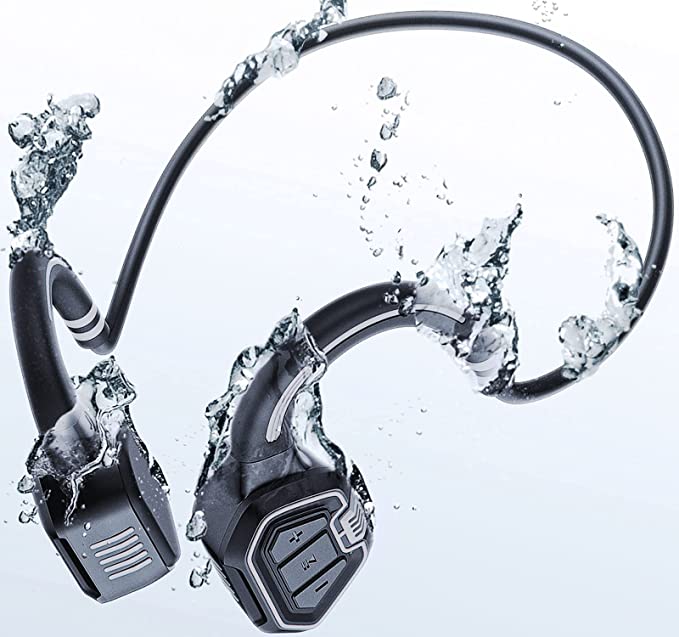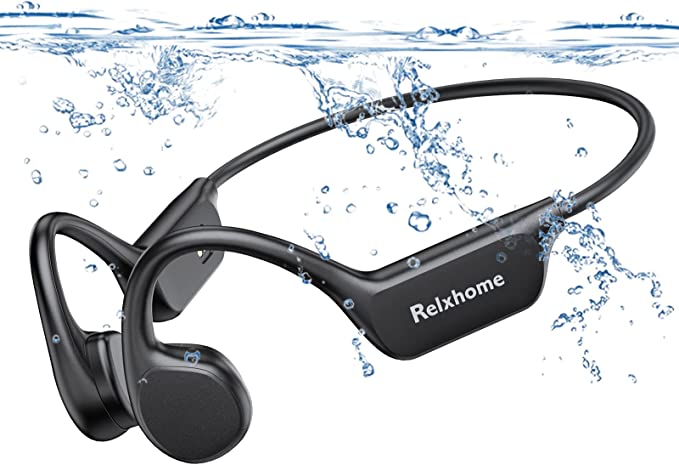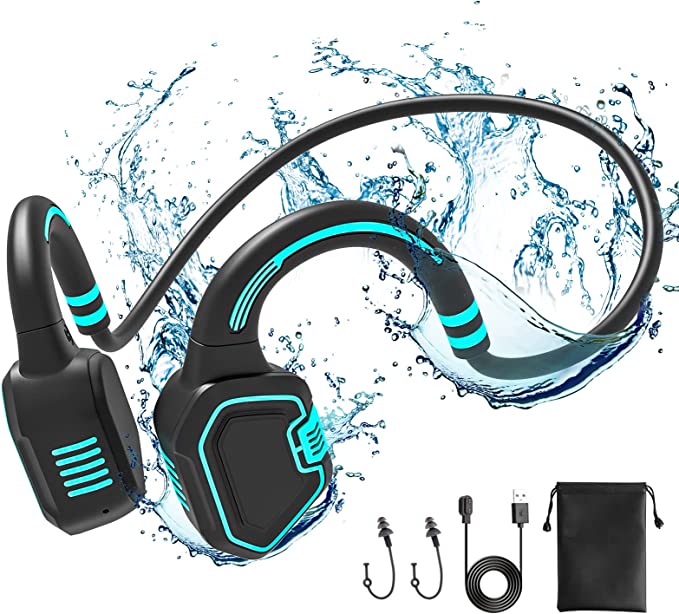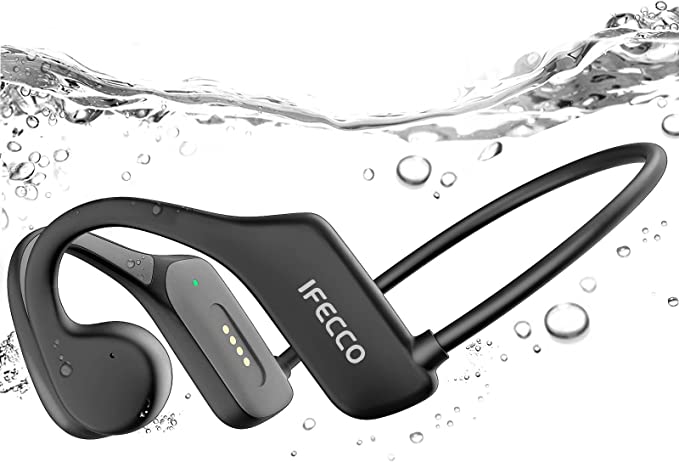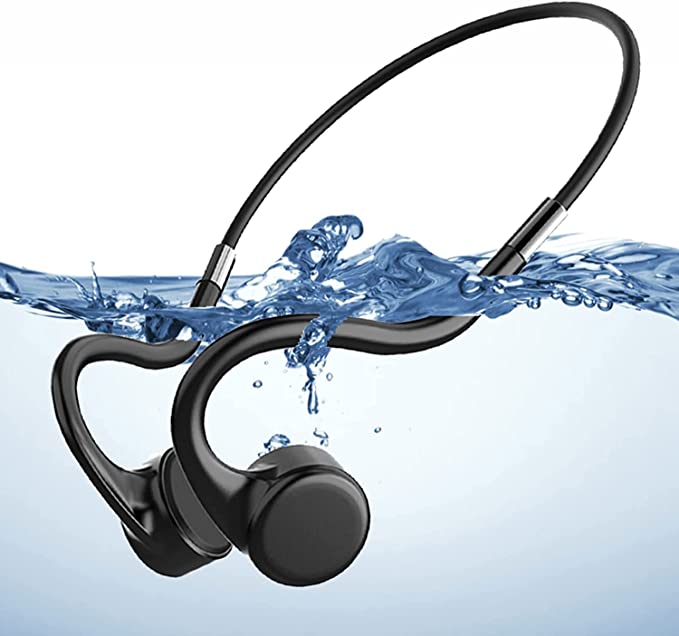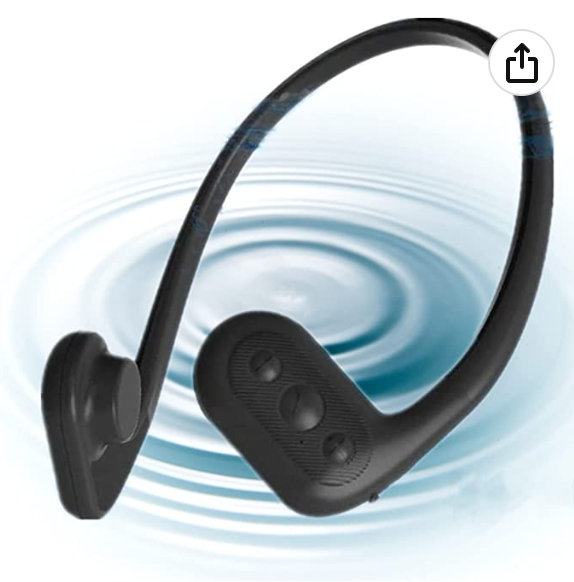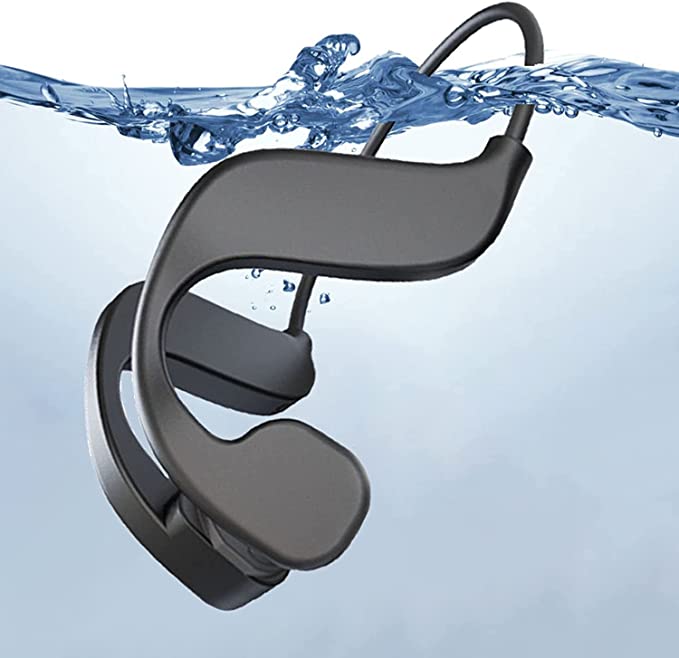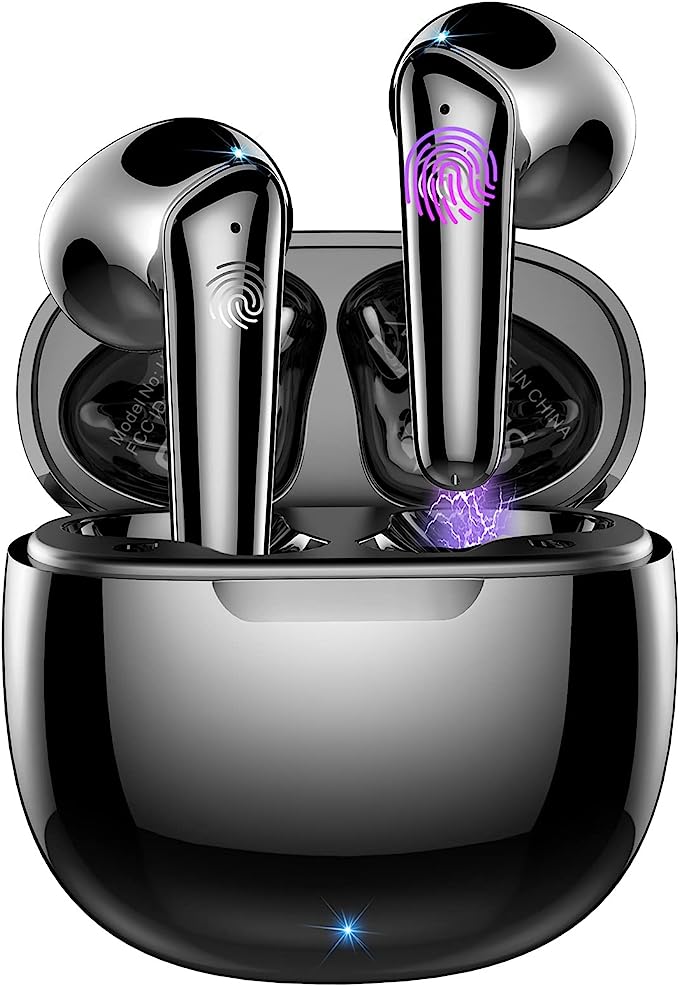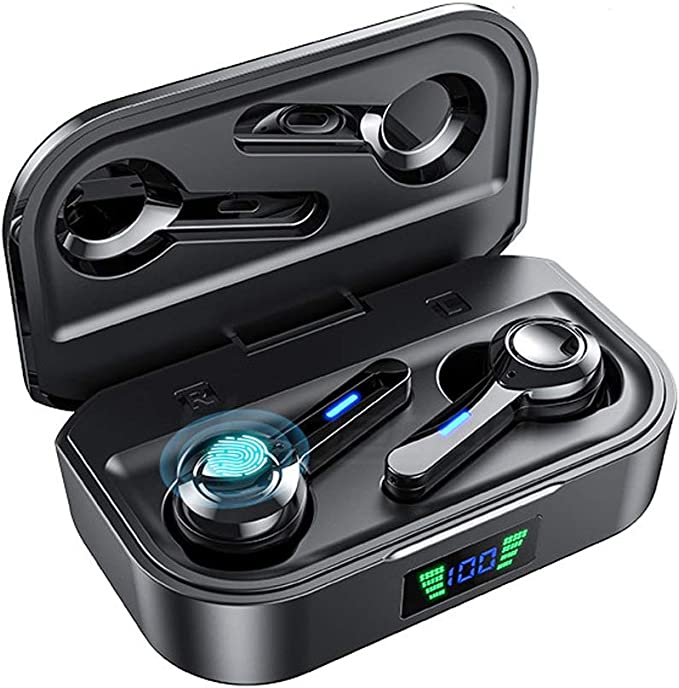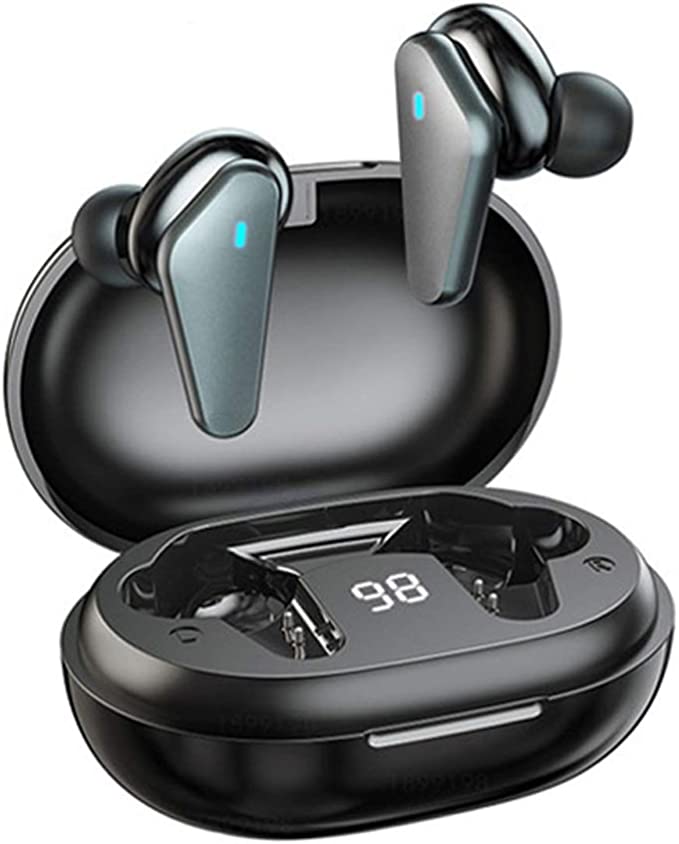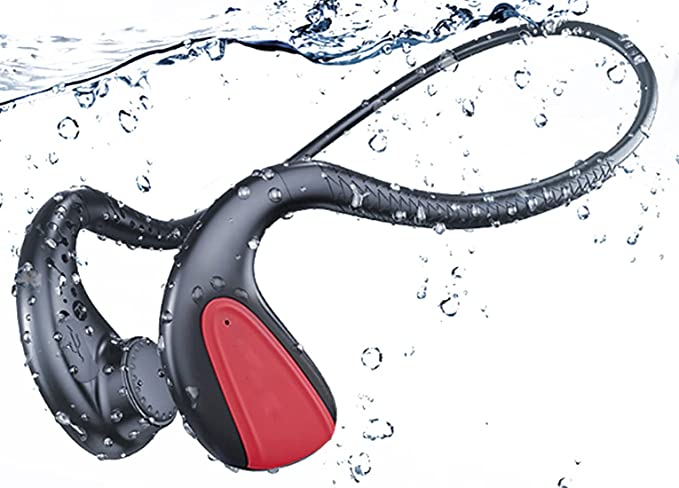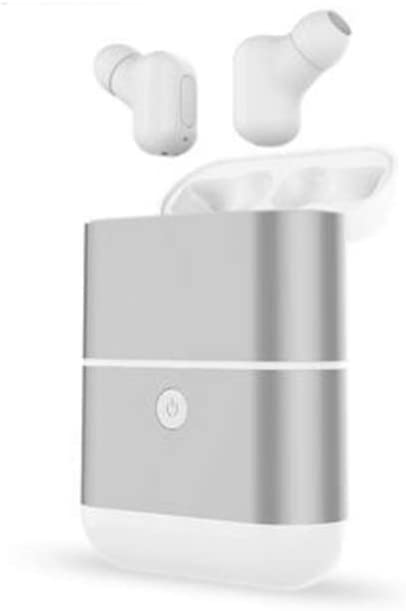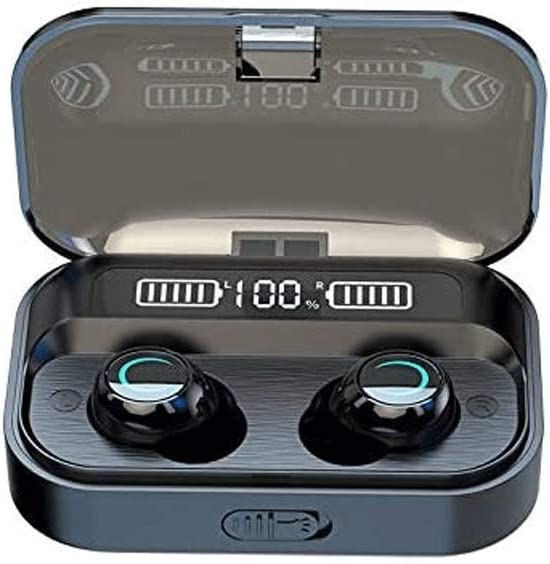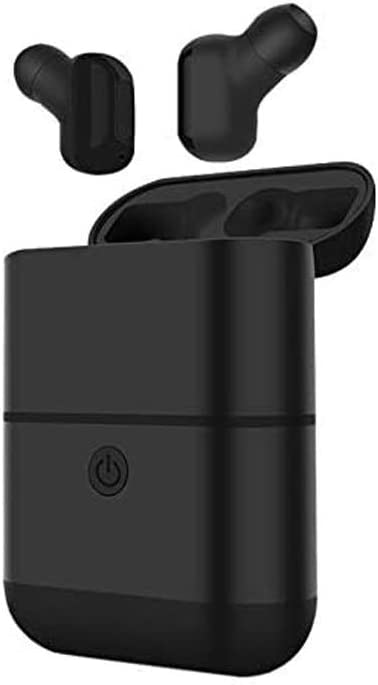JekaDabe Waterproof Swimming Headphones: Enjoy Music Underwater with Bone Conduction
Update on March 20, 2025, 12:22 p.m.
For many, swimming is a meditative escape, a rhythmic dance with the water. Yet, this serene world is often a silent one. While the visual beauty of the underwater realm captivates, the auditory experience is often limited to the muffled sounds of splashing and the rhythmic whoosh of your own breath. What if you could add a soundtrack to your swim, experiencing your favorite music with clarity and safety, all while immersed in the aquatic world? This is the promise of bone conduction technology, and it’s transforming the way we experience swimming.
Sound Beneath the Surface: The Unique Acoustics of the Underwater World
Sound travels differently underwater than it does in air. Water, being much denser than air, presents unique challenges to sound transmission. Sound waves, which are essentially vibrations, travel much faster in water (about 4.3 times faster than in air). However, they also attenuate (lose energy) more quickly. This means that while sound can travel long distances underwater, the high frequencies, which are crucial for clarity and detail, are absorbed more rapidly than low frequencies.
Traditional in-ear headphones, even those designed to be waterproof, often struggle in this environment. The water creates a seal that can trap air and cause uncomfortable pressure changes. Furthermore, the sound waves must still travel through the water trapped in the ear canal, leading to muffled and distorted audio. And let’s not forget the ever-present risk of water damage to delicate electronics.
Bone Conduction: Hearing Through Vibrations
Bone conduction offers a brilliant workaround to these challenges. Instead of relying on sound waves traveling through the air and into your ear canal, bone conduction technology transmits sound vibrations directly through the bones of your skull to your inner ear, the cochlea.
Imagine you’re humming. You hear the sound not just through your ears, but also within your head. This is because the vibrations from your vocal cords are traveling not only through the air but also through the bones of your skull. Bone conduction headphones work on the same principle, using transducers to convert electrical signals into mechanical vibrations that are then transmitted through your cheekbones (typically) to your cochlea.
Here, the vibrations stimulate the tiny hair cells within the cochlea, just as they would with air-conducted sound. These hair cells convert the vibrations into electrical signals that are sent to your brain, which interprets them as sound. The eardrum and middle ear are largely bypassed in this process.
The process can be visualized:
- Electrical Signal: The headphones receive an electrical audio signal (either from the built-in MP3 player or via Bluetooth).
- Transducer Conversion: A transducer, a device that converts one form of energy to another, transforms the electrical signal into mechanical vibrations.
- Bone Transmission: These vibrations are transmitted through the bones of the skull (usually the cheekbones or temporal bones) directly to the cochlea.
- Cochlear Stimulation: The vibrations cause the fluid inside the cochlea to move, stimulating tiny hair cells.
- Auditory Nerve: The hair cells convert these vibrations into electrical signals that are sent to the brain via the auditory nerve.
- Sound Perception: The brain interprets these signals as sound.
A History of Hearing: From Beethoven to Swimming
The concept of bone conduction isn’t new. In fact, it’s been understood, albeit perhaps not fully scientifically, for centuries. One of the most famous examples is the composer Ludwig van Beethoven, who, despite becoming profoundly deaf, continued to compose music. He reportedly used a rod attached to his piano, which he would clench in his teeth. The vibrations from the piano would travel through the rod and his jawbone to his inner ear, allowing him to “hear” the music.
The first practical application of bone conduction for hearing assistance came in the mid-20th century with the development of bone conduction hearing aids. These devices were designed for people with conductive hearing loss, where sound transmission through the outer or middle ear is impaired.
JekaDabe: Designed for the Deep
The JekaDabe Waterproof Swimming Headphones represent a modern application of bone conduction, specifically tailored for the aquatic environment. Let’s explore the key features:
-
IP68: The Science of Waterproofing: The “IP” in IP68 stands for “Ingress Protection.” It’s an international standard that defines levels of sealing effectiveness of electrical enclosures against intrusion from foreign bodies (like dust and dirt) and moisture. The “6” in IP68 refers to the dust protection level (completely dust-tight), and the “8” refers to the water protection level. An “8” signifies protection against the effects of continuous immersion in water under conditions which shall be specified by the manufacturer. In JekaDabe’s case, this means submersion up to 2 meters. This robust waterproofing is essential for any device intended for use in swimming. It’s achieved through a combination of careful sealing of the housing, waterproof materials, and potentially specialized coatings.
-
MP3 Mode: Your Underwater Jukebox: As mentioned earlier, Bluetooth signals don’t travel effectively through water. This is because water molecules readily absorb the radio waves used by Bluetooth. That’s where the built-in MP3 player comes in. With 32GB of storage, you can load thousands of songs directly onto the headphones, ensuring uninterrupted music playback during your swim. You simply switch to MP3 mode before entering the water, and you’re ready to go. The files are transferred via the included magnetic charging cable.
-
Bluetooth 5.3: Connectivity Above the Waves: While Bluetooth isn’t suitable for underwater use, it’s perfect for activities outside the pool. The JekaDabe headphones feature Bluetooth 5.3, the latest version of this wireless technology. Compared to earlier versions, Bluetooth 5.3 offers several advantages:
- Enhanced Connection Stability: Reduced interference and a more reliable connection.
- Lower Power Consumption: Improved battery life.
- Faster Data Transfer: Quicker pairing and file transfers.
-
Open-Ear Design: Safety and Comfort: One of the most significant benefits of bone conduction is the open-ear design. Because your ear canals remain unobstructed, you can still hear ambient sounds. This is crucial for safety in the pool, allowing you to hear lifeguard whistles, approaching swimmers, or any other important auditory cues. The open-ear design also enhances comfort, especially for extended wear. There’s no pressure or discomfort from earbuds pressing against your ear canal.
-
Materials and Build: Durability in the Depths: The specific materials used in the JekaDabe headphones aren’t detailed in the provided information, but they are undoubtedly chosen for their water resistance, durability, and comfort. Likely candidates include silicone and lightweight plastics, which are both water-resistant and comfortable against the skin. The ergonomic design ensures a secure fit, preventing the headphones from dislodging during vigorous swimming movements.
The Safety of Bone Conduction: Addressing Concerns
Some people express concerns about the safety of bone conduction, wondering if transmitting vibrations through the skull could damage hearing. However, extensive research has shown that bone conduction is generally safe. In fact, because it bypasses the eardrum, it can be less damaging to hearing at high volumes than traditional headphones, which can cause noise-induced hearing loss by overstimulating the eardrum.
It’s important to note, however, that any sound, regardless of how it’s transmitted, can damage hearing if it’s too loud. The key is to listen at a reasonable volume.
Beyond the Pool: Other Applications of Bone Conduction Technology
Bone conduction isn’t limited to swimming headphones. It has a variety of other applications, including:
- Hearing Aids: As mentioned earlier, bone conduction hearing aids are a valuable option for people with conductive hearing loss.
- Military Communications: Bone conduction headsets allow soldiers to hear radio communications while maintaining situational awareness (hearing ambient sounds).
- Gaming Headsets: Bone conduction gaming headsets allow gamers to hear game audio while also being able to hear their surroundings (e.g., conversations with teammates).
- Safety Headsets: For cyclists, runners, and other outdoor enthusiasts, bone conduction headsets provide a safer way to listen to music while remaining aware of traffic and other potential hazards.
Swimming with Sound: Enhancing the Aquatic Experience
Imagine yourself gliding through the water, the rhythmic strokes of your arms and legs perfectly synchronized with the beat of your favorite song. With the JekaDabe headphones, this becomes a reality.
- For the Beginner: Music can provide motivation and distraction, making those initial laps less daunting.
- For the Competitive Swimmer: The right playlist can help maintain a consistent pace and push through challenging workouts.
- For the Leisure Swimmer: Music can enhance the relaxation and enjoyment of a leisurely swim.
- Beyond swimming: the JekaDabe headphones’ Bluetooth capabilities allows listening music during running, walking, exercising, traveling, and working
The ability to listen to music underwater transforms the swimming experience, turning a solitary activity into an immersive and engaging one.
The Future of Underwater Audio: Continued Innovation
The JekaDabe Waterproof Swimming Headphones represent a significant step forward in underwater audio technology. But the innovation is unlikely to stop here. We can expect to see further advancements in the future, such as:
- Improved Sound Quality: Ongoing research and development will likely lead to even better sound fidelity in bone conduction headphones.
- Miniaturization: Smaller and more discreet designs.
- Integration with Other Technologies: Combining bone conduction with other sensors (e.g., heart rate monitors) to create even more comprehensive fitness tracking devices.
- Enhanced Waterproofing: Potentially enabling use at even greater depths.
The JekaDabe headphones offer a glimpse into this exciting future, providing a safe, comfortable, and enjoyable way to experience music underwater.

